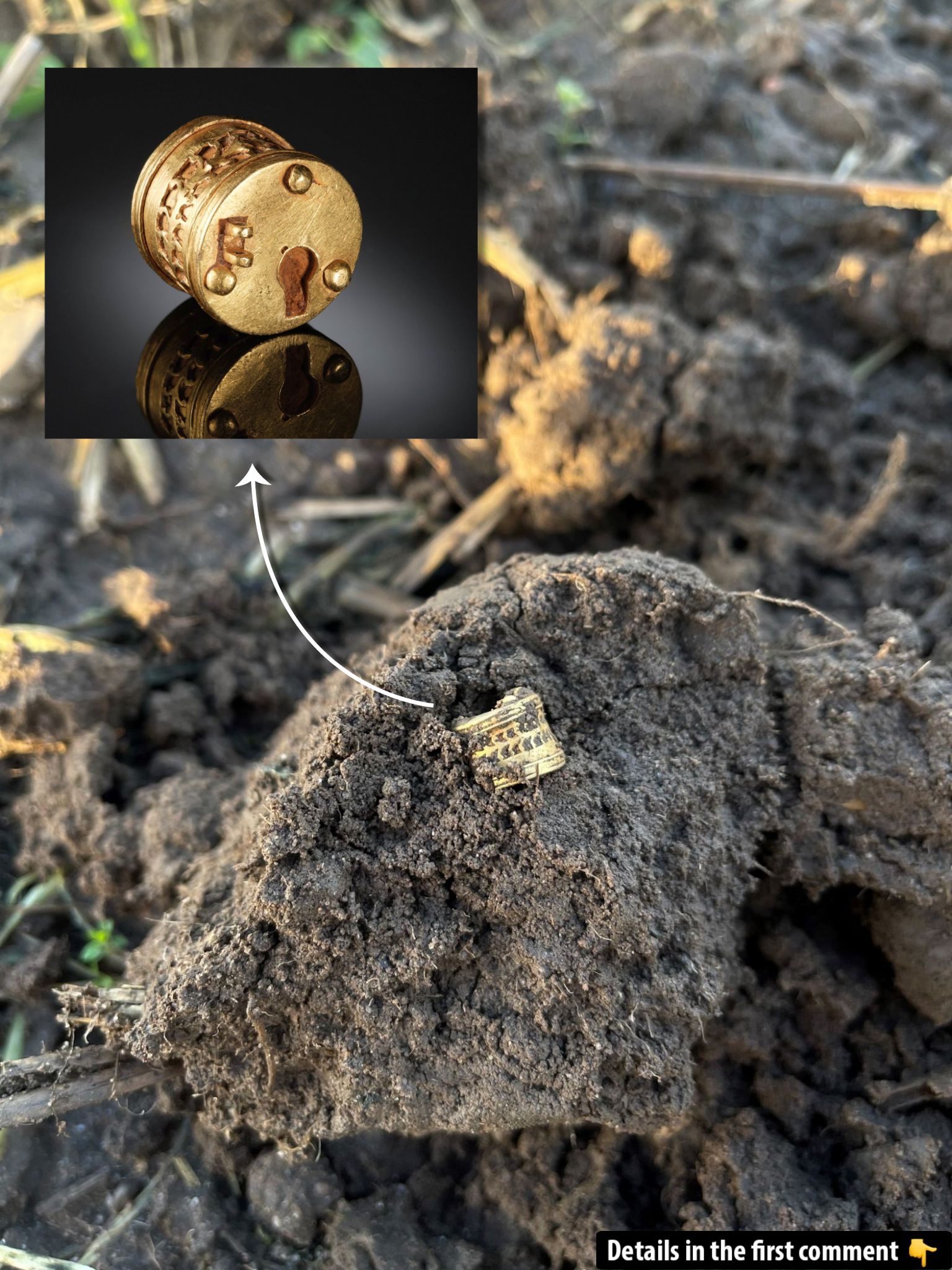In the quiet town of Petershagen, Germany, a remarkable archaeological find has uncovered a rare treasure from the Roman period. In 2023, metal detectorist Constantin Fried unearthed a miniature gold lock, marking one of the most unique and significant discoveries in Roman archaeology. This tiny artifact, no larger than a modern coin, offers new insights into Roman craftsmanship and the relationships between local elites in Westphalia and the far-reaching Roman Empire. As experts continue to examine the lock’s intricate design, it has quickly become a symbol of ancient innovation and the complexity of Roman society.
A Historical Glimpse into the Past: The Roman Lock’s Origin
The miniature lock discovered by Fried is a rare example of the Roman cylindrical lock, a device traditionally used to secure boxes and containers. Historically, these locks were typically made from iron or bronze and were large enough to secure valuable items in Roman households. However, this gold-and-iron lock, measuring only 1.2 by 1.1 centimeters, stands out due to its remarkable miniaturization.
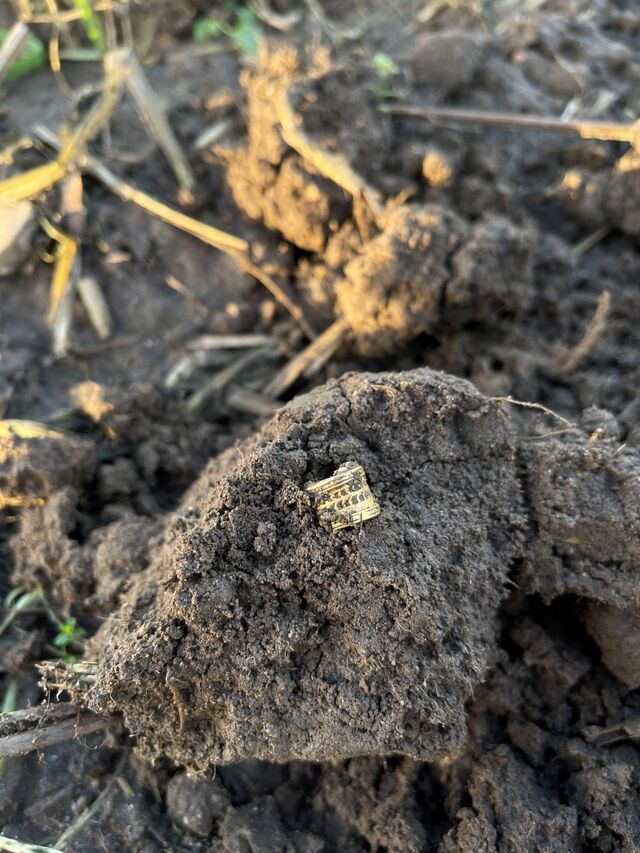
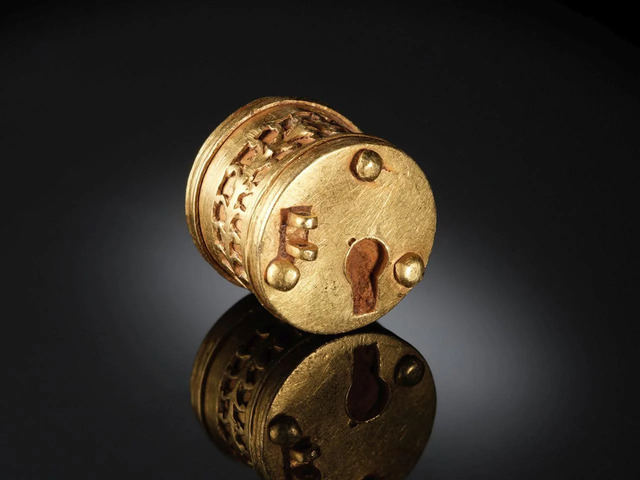
Dating back to the 3rd or 4th century CE, the lock’s design is believed to have been created in the provincial Roman territories, showcasing the advanced metalworking skills of the time. This discovery, much smaller than any known Roman locks, offers valuable insight into Roman craftsmanship and its application in everyday life.
Video
Watch the video to see the discovery of a tiny 1,600-year-old Roman-age gold lock in Germany. This incredible find reveals fascinating details of ancient craftsmanship!
Intricate Design: Analyzing the Miniature Gold Lock
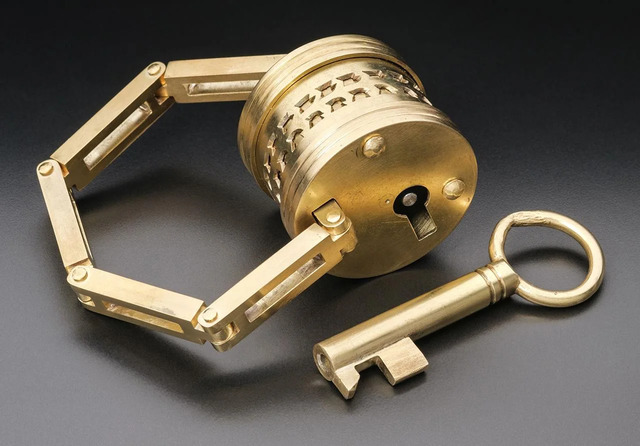
This gold lock’s construction and design are remarkable for their size and intricacy. The lock consists of two cylindrical metal sheets closed with caps at the top and bottom and held together with gold rivets. The outer casing is decorated with sculpted perforations, suggesting a high level of craftsmanship typically seen in luxury items or products of high status. Its use of gold and its minute size, compared to the larger locks traditionally used by Romans, indicate that it might have been a personal or symbolic object rather than a utilitarian one. The missing key and chain link only add to the mystery of its original function, with experts speculating that it could have been part of a larger ceremonial or elite object.
Unlocking the Mechanism: Advanced Technology Reveals the Secrets Inside
Understanding how the lock functioned required more than a simple visual examination. Archaeologists turned to cutting-edge technology to peer inside the lock’s dense gold casing. Traditional X-ray methods proved insufficient due to the metal’s thickness, so researchers employed 3D neutron computed tomography (CT), an advanced imaging technique that allowed them to visualize the internal components of the lock with remarkable clarity.
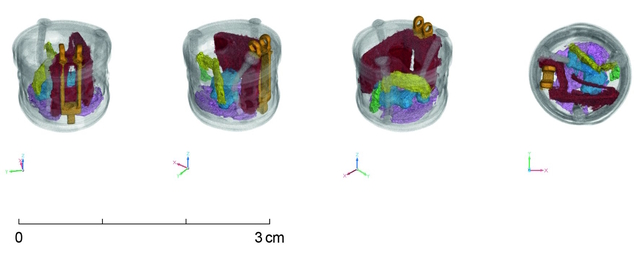
The CT scans revealed the inner workings of the lock: a frame with a spring, a guide rail, a bolt, a base plate, and a pin—all essential components for its function. These elements, though somewhat damaged, pointed to the lock’s functional nature, allowing the experts to reconstruct its mechanism despite the damage. The intricacy of its internal components highlights the sophisticated engineering that went into Roman locks, which were often used to protect valuable possessions or secure military items.
Reconstruction Efforts: Bringing the Lock Back to Life
With the internal mechanism now understood, the next step was to reconstruct the lock to demonstrate how it would have operated. LWL Archaeology’s restoration team, using the detailed data from the CT scans, crafted a working replica of the lock at four times the original size. This reconstruction, complete with a chain modeled after the remaining link found attached to the original lock, has allowed experts to confirm how the lock would have been used. The chain itself was likely integral to the lock’s function, and the presence of the end link suggests that it was designed to be part of a complete locking system.
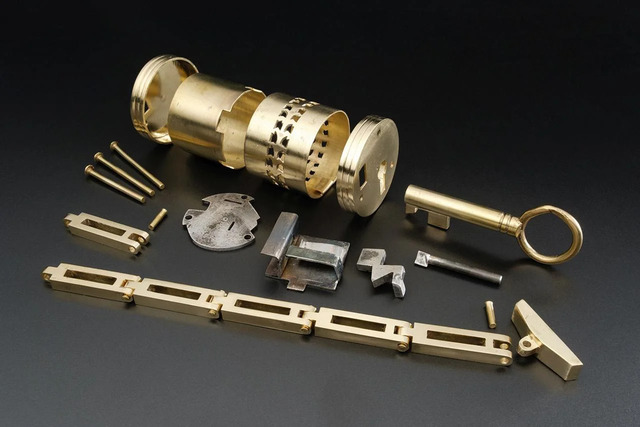
The replica provides a clearer understanding of the lock’s intended purpose, offering an insight into the precision and ingenuity behind Roman lock-making. The use of gold for such a small and intricate piece suggests it may have been created for a wealthy Roman or for ceremonial purposes, further cementing its significance as both a technological and artistic marvel.
A Deeper Look at Roman-Elite Interactions: The Lock’s Cultural Significance
Beyond its technical complexity, the discovery of the miniature Roman lock also sheds light on the interactions between Roman soldiers, local elites, and provincial societies in Westphalia. The lock is believed to have either been brought back to the region as war loot, as part of Roman trade, or even as a personal memento by a soldier returning from service in the Roman army.
The presence of such an artifact in Westphalia, far from the core of the Roman Empire, suggests the possibility of cultural exchange between the Roman military and the local elites. As Roman soldiers moved across Europe, they not only spread the empire’s influence but also left behind artifacts that tell the story of the Roman Empire’s reach and the melding of different cultural influences. The miniature lock, with its gold and intricate design, may have been a symbol of this interaction, a testament to the blending of local and Roman values and traditions.
A Glimpse into Roman Craftsmanship and Elite Status
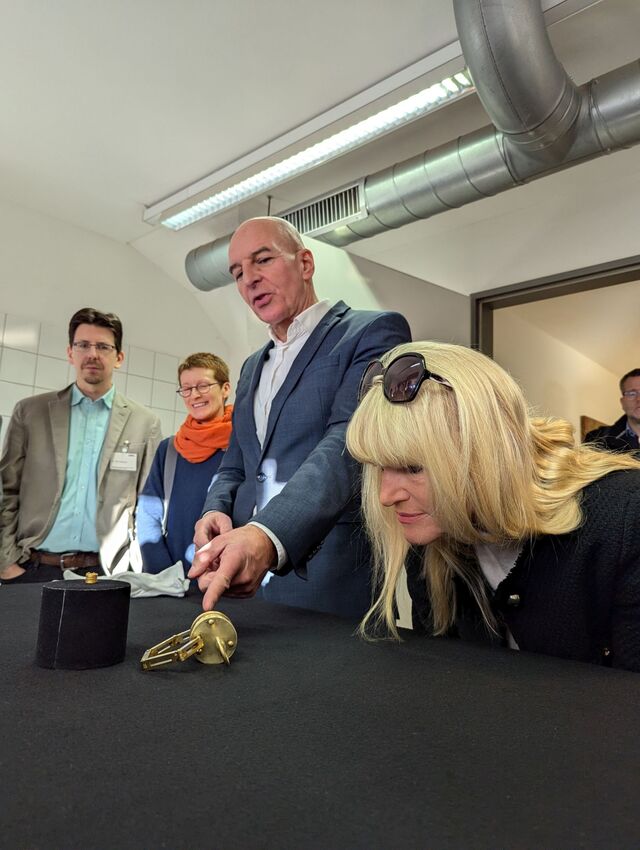
The tiny Roman lock is a perfect example of the high level of craftsmanship that was common in Roman metallurgy, especially in luxury items. The miniaturization of such a complex locking mechanism demonstrates the sophistication of Roman metalworkers, who had the skill to produce both functional and decorative items. The fact that the lock was likely a high-status object further emphasizes the importance of such artifacts in the Roman world, serving both practical and symbolic functions.
It is also an important reminder of the value placed on security and privacy in the Roman world, even in seemingly personal or decorative objects. The use of intricate locks and keys suggests a society deeply concerned with protecting its material wealth and ensuring the safety of personal items, a concern that transcends time and continues to resonate in modern society.
Video
Check out the video to see the highest value item on Antiques Roadshow take its owner completely by surprise. You won’t believe what it’s worth!
Conclusion: Unlocking New Insights into Roman Life
The discovery of the miniature Roman lock is more than just an archaeological find; it’s a key that unlocks new insights into Roman craftsmanship, military history, and cultural exchanges between the Roman Empire and provincial regions like Westphalia. This small artifact, through its detailed craftsmanship and advanced mechanism, offers a glimpse into the lives of the people who used it, the elite status it may have represented, and the complex relationships that existed between Rome and its provinces.
As research into the lock continues, it will undoubtedly provide further answers to the questions surrounding its origin and purpose. For now, the miniature lock remains a unique artifact that highlights the remarkable achievements of Roman engineers and serves as a tangible connection to a past long gone but still fascinatingly close through the objects it left behind.
